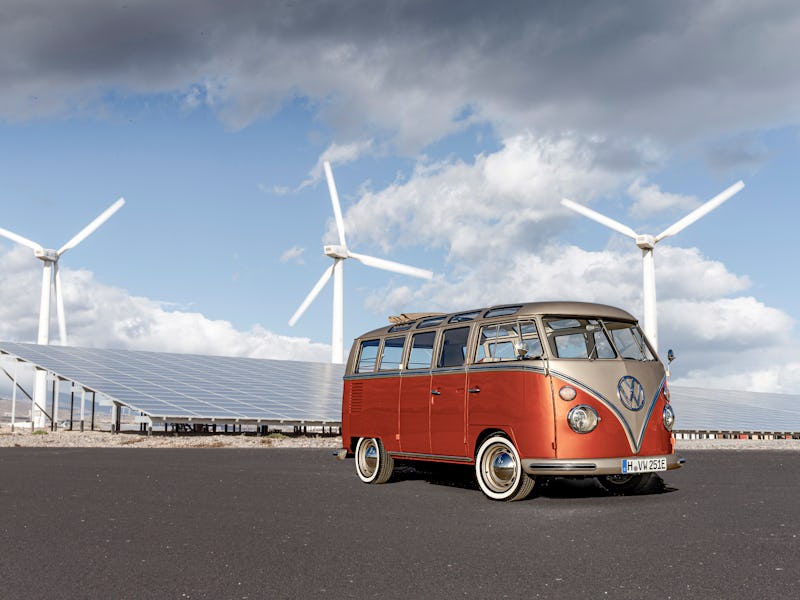VW’s e-Bulli is a totally groovy electric car conversion of the hippie van
Volkswagen has given a modern twist on a classic.

Volkswagen took the wraps off a new concept vehicle Tuesday – a hippie van with an electric vehicle twist.
The e-Bulli concept is based on the T1 Samba Bus. Working with electric car conversion firm eClassics, the team took one of the vehicles produced in Hannover in 1966, which had spent decades cruising around California, and fitted it out with more modern internals. Gone was the 43-horsepower four-cylinder boxer engine, replaced by an 82-horsepower electric motor. Once the team was finished, the team claimed the ride felt completely different.
The project is not just a one-time concept, however. eClassics will offer a T1 conversion starting at €64,900 ($69,837), as well as T2 and T3 conversions for unspecified prices.
It's a fun product, but one that highlights Volkswagen's serious commitments to electric vehicles. Last year the company announced plans to spend $800 million on a plant in Tennessee aimed at producing electric vehicles. The firm aims to sell 150,000 electric cars in 2020 and one million by 2025, no small feat considering Tesla has sold just under a million cars in its 12 years of EV production. As part of this effort, Volkswagen has demonstrated a series of eye-catching concepts like the ID Roomzz autonomous car and ID R electric sports car.
Going for a ride.
The e-Bulli is the latest in these efforts. The car now packs a 45-kilowatt lithium-ion battery, charged by a CCS socket. DC fast charging can provide up to 50 kilowatts of power, charging up 80 percent in 40 minutes. The battery can expect to cover around 124 miles between charges.
Zoom!
Top speed has also received a boost. While the original vehicle managed just 65 miles per hour at the high end, the e-Bulli reaches an electronically-limited 80 miles per hour.
Getting charged up.
A new chassis improves the safety and comfort of the ride, with a new rack-and-pinion steering system and four disc brakes with internal ventilation. Front and rear axles now pack adjustable shock absorbers.
A view of the conversion.
Externally, the vehicle features new LED headlamps. One neat addition is LED charging indicators, which can tell others as they approach how much charge remains in the vehicle.
The interior demonstrated.
Internally, Volkswagen has also redesigned the car. The eight-seater now offers a start and stop button for the electric motor, integrated into a central console between the driver and front passenger seat. A new panoramic folding roof sits overhead.
The central console.
On the dashboard, a new speedometer uses a two-digit display that communicates information like range. The radio looks retro, but features new technologies like DAB, Bluetooth and USB.
A view of the roof.
The car also hooks up to a smartphone app to provide stats like the remaining range and miles traveled.
The instrument cluster.
It's not the first time Volkswagen has looked back to the past in its electric vehicle efforts. The ID Buzz is a new vehicle that uses the hippie van as its starting point, with a range of up to 373 miles and power output of 275 kilowatts. The vehicle, which forms part of the company's broader ID range, is set to launch in 2022.